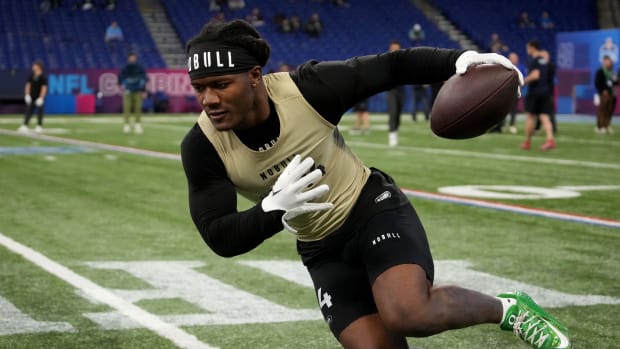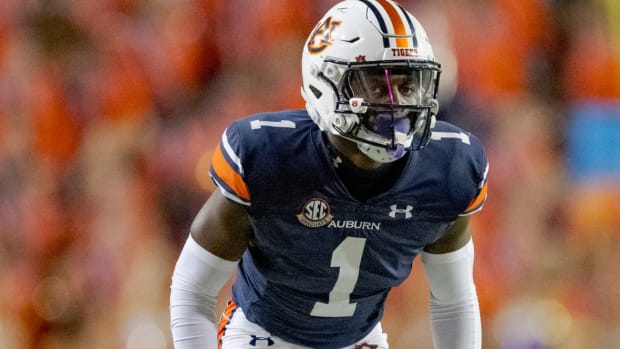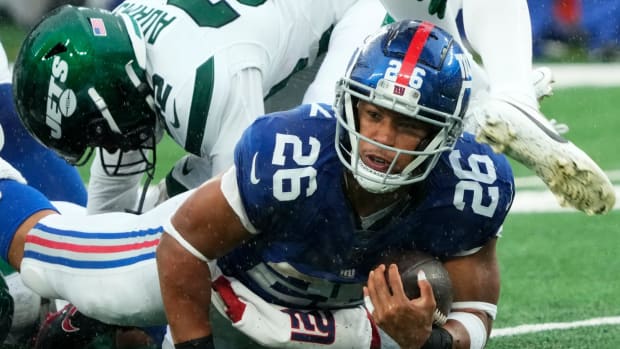NFL Combine Drills, Explained
As the annual NFL Combine kicks off this week, league prospects will undergo in measurements and medical tests, and participate in a wide variety of drills and workouts designed to measure overall physical fitness, speed, agility, strength and more. Almost all players will participate in five main events—the 40-yard dash, the vertical jump, the shuttle run, the bench press and the broad jump. Here’s how those drills apply to on-field skills during NFL games.
Icons by Martin Laksman.
The 40
Best: 4.22 seconds, WR John Ross, 2017
What it is: Starting from a three-point stance, players sprint for 40 yards.
How it translates on the field: Jeff Foster, the director of the scouting combine, says that he had conversations with NFL evaluators about eliminating this drill for offensive linemen, since they rarely need to sprint 40 yards. But he learned that teams pay close attention to linemen’s 10-yard split times, which show how quickly they accelerate over a realistic distance. Likewise, he says, “A lot of teams look at how fast a receiver can get from 20 to 40 yards, and a running back from 10 yards to 20 yards.”
Vertical jump
Best: 46", DB Gerald Sensabaugh, 2005
What it is: Players stand flat-footed and then jump as high as they can, touching the highest flag they can reach.
How it translates on the field: “A test of explosive power,” Foster says, this measurement is pertinent for all positions, but it is most relevant for receivers and safeties, who routinely compete in the air for passes.
20-Yard Shuttle Run
Best: 3.73 seconds, WR Kevin Kasper, 2001
What it is: From a three-point stance midway between two lines 10 yards apart, a player runs five yards to his right, touches the ground, runs back, touches the other line and then sprints back to the starting point.
How it translates on the field: The shuttle is indicative of lateral speed and agility, making it a good test for evaluating receivers who depend on running convincing routes to gain separation from defenders.
Bench Press
Best: 51 reps, DT Justin Ernest, 1999
What it is: Players bench-press a 225-pound barbell as many times as possible.
How it translates on the field: Foster admits that the traditional bench press is a better measure of endurance strength than pure strength, and the scouting combine is looking to replace it with position-specific tests that are safer and more accurate indicators of strength. Some ideas being considered: traditional pull-ups or using weighted balls with accelerometers inside that measure a player’s force when he throws it, which would be important for linemen in particular.
Broad Jump
Best: 12'3", CB Byron Jones, 2015
What it is: Player jumps forward off both feet, landing balanced.
How it translates on the field: Similar to the vertical jump, this is all about explosive power, but the broad jump accesses slightly different muscle groups, notably those around the ankles and hips. It acts, therefore, as a good measure of power for running backs.









































